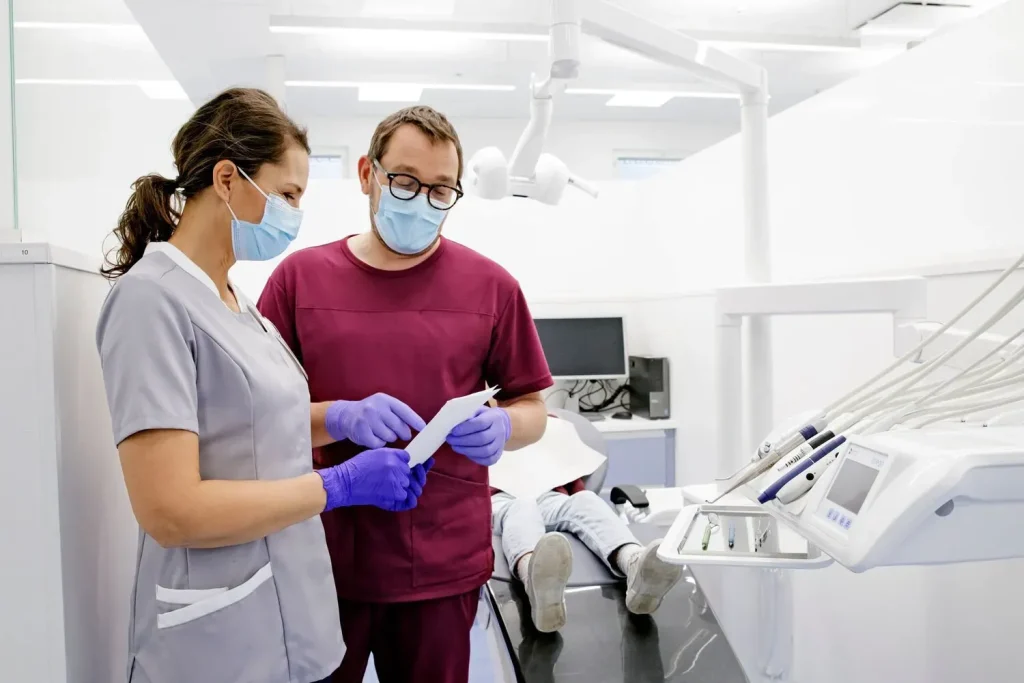Laundering healthcare uniforms is a critical issue that many healthcare workers overlook, but a recent study reveals serious risks associated with washing these textiles at home. Researchers found that home washing machines often fail to eliminate superbugs, including antibiotic-resistant bacteria, even when operating at high temperatures. With the rise of superbugs in laundry, it’s becoming increasingly evident that effective infection control measures are essential for healthcare professionals. Cleaning practices need to go beyond the domestic setting, as even diligent workers may unknowingly contribute to the spread of harmful pathogens. This growing concern emphasizes the need for healthcare institutions to reconsider policies surrounding the laundering of uniforms to protect both staff and patients alike.
The washing of medical attire is crucial for maintaining hygiene standards within healthcare environments. Recent findings highlight potential hazards associated with the at-home cleaning of nurse and doctor uniforms, where ineffective washing processes may become a breeding ground for antibiotic-resistant microorganisms. Alternatives to domestic laundering, such as commercial laundering services, could better safeguard public health and prevent the spread of infection. In essence, adopting robust laundry protocols within clinical settings can ensure that all healthcare workers maintain their uniforms free from harmful contaminants. The implications of these findings underscore the importance of reevaluating laundry practices to enhance patient safety and infection prevention.
The Risks of Home Laundering for Healthcare Workers
Healthcare workers often face unique challenges when it comes to laundry, as their work uniforms can become contaminated with superbugs and antibiotic-resistant bacteria. A recent study conducted by Professor Katie Laird indicates that home washing machines may not adequately remove these harmful pathogens, posing a significant risk to both the individuals using them and the larger community. The inability of standard home laundry cycles to achieve necessary disinfection levels raises important questions about how healthcare professionals manage their clothing after shifts.
With many healthcare workers opting to wash their uniforms at home for convenience, the potential for infection spread increases. According to the study, even when adhering strictly to washing guidelines, a significant portion of washing machines tested failed to reach sufficient temperatures to eliminate pathogens. This risk not only affects the healthcare worker but also places their families and patients at risk, as resistant strains can spread beyond the laundry room and into hospitals and community settings.
Preventing Superbug Spread through Effective Uniform Laundering
To combat the rise of antibiotic-resistant bacteria linked to the laundering of healthcare uniforms, it’s essential to focus on effective laundering practices. The study’s findings underscore the importance of not just high washing temperatures but also the use of appropriate detergents and disinfectants. Healthcare institutions should advocate for standardized laundering policies, where uniforms are cleaned in industrial laundries designed specifically to eliminate superbugs, thus ensuring infection control measures are upheld.
Incorporating rigorous laundering standards within healthcare facilities can significantly reduce the transmission of harmful bacteria. This approach limits the reliance on home laundry systems, which are frequently mismanaged in terms of temperature and detergent effectiveness. As part of this initiative, training sessions and guidelines for healthcare workers on how to manage their uniforms can enhance compliance and minimize the risk of spreading antibiotic-resistant strains.
The Role of Home Washing Machines in Public Health
Home washing machines have a critical role in public health, especially for those in the healthcare sector. Unfortunately, the findings from Professor Laird’s study indicate that these machines can become breeding grounds for superbugs if not properly maintained and utilized. Given that a significant percentage of washing machines failed to effectively disinfect clothing during standard cycles, it’s evident that reliance on home laundering can jeopardize hygiene practices essential in preventing infections.
In light of these discoveries, it’s crucial to promote public awareness regarding the limitations of home washing machines in managing contaminated textiles. Home washing practices that do not involve stringent control measures can inadvertently contribute to the spread of pathogens, including those resistant to antibiotics. Education campaigns emphasizing the importance of professional laundering services and how to properly maintain home washing machines can play a vital role in enhancing overall public health safety.
Understanding Antibiotic-Resistant Bacteria and Its Implications
Antibiotic-resistant bacteria pose a growing threat to global health, exacerbating treatment challenges for common infections and increasing healthcare costs. Healthcare workers, due to their proximity to both sick patients and potentially contaminated clothing, are in a unique position to influence the spread of these pathogens. By understanding the dynamics of antibiotic resistance in relation to laundry practices, we can better address infection control measures and pursue effective solutions.
The study points to a critical need for maintaining high standards in laundering practices for healthcare uniforms. Without adequate infection control measures in place, healthcare environments may inadvertently become hotspots for infection transmission. Addressing the spread of antibiotic-resistant bacteria through improved laundry practices is imperative not only for the safety of healthcare workers but also for the protection of the public at large.
Best Practices for Laundering Healthcare Textiles
Implementing best practices for laundering healthcare textiles is essential for reducing the risk of spreading superbugs and ensuring effective infection control. This includes specific guidelines regarding water temperatures, types of detergents, and even moisture control during drying. Healthcare facilities should prioritize the adoption of industrial laundry services, which are designed to operate at the necessary temperatures and with potent disinfectants to eliminate pathogens.
For healthcare workers who may still wash at home, rigorous adherence to recommended practices is vital. This can involve setting washing machines to the hottest settings allowed and using laundry disinfectants designed to combat resistant strains. Regular maintenance of home machines, including monthly cleaning with appropriate antimicrobial solutions, is also crucial to mitigate the risk of harboring antibiotic-resistant bacteria.
Guidelines for Safe Home Washing Practices
Given the challenges associated with home laundry, healthcare workers should employ safe washing practices to protect themselves and their communities. Following specific temperature guidelines, such as washing at a minimum of 194 degrees Fahrenheit, can significantly aid in disinfection. Additionally, using commercial-grade detergents that contain antimicrobial properties could enhance the ability to remove resistant pathogens.
It is also beneficial for healthcare professionals to foster dialogue with their employers regarding appropriate laundering practices. By addressing concerns about home washing, they can advocate for necessary policy changes that prioritize health and safety. Together, informed practice and institutional support can effectively safeguard against the spread of superbugs through home laundering.
Enhancing Infection Control through Proper Laundering
Infection control in healthcare settings relies heavily on proper laundering practices. The interplay between antibiotic-resistant bacteria and healthcare uniforms necessitates a comprehensive strategy that includes professional laundering. This ensures that all textiles used in medical environments are appropriately sanitized, thus reducing the risk of spreading infections.
It’s critical for healthcare organizations to create strong policies that not only educate healthcare workers about effective laundering but also provide resources for accessing reliable laundering services. By fostering an environment that prioritizes hygiene and professional laundering, healthcare institutions can significantly decrease the prevalence of superbugs and enhance patient safety in clinical settings.
Public Awareness and Education on Antimicrobial Resistance
Raising public awareness and educating both healthcare professionals and the general public on antimicrobial resistance is a pivotal step toward combating this global health threat. Programs aimed at informing about the risks associated with home washing could lead to more informed choices regarding laundry practices. Education on proper hygiene techniques, the importance of professional laundering, and the detrimental impact of antibiotic misuse can empower individuals to take proactive measures.
Furthermore, public health campaigns should focus on clarifying the link between laundry practices and the spread of antibiotic-resistant bacteria. By increasing understanding on this topic, communities can work together to adopt better infection control measures, leading to a healthier overall environment.
Future Directions for Healthcare Laundry Practices
As the threat of antibiotic-resistant bacteria continues to evolve, future directions for healthcare laundry practices must incorporate advanced technology and research-driven methods. Innovations in laundry systems that enhance disinfection capabilities can play a crucial role in supporting infection control measures. Ongoing studies similar to that of Professor Laird’s are essential in informing healthcare policies and guiding best practices.
Additionally, collaboration between healthcare facilities, washing machine manufacturers, and laundry service providers can drive the development of solutions that meet the unique needs of healthcare organizations. These partnerships will ultimately lead to improved laundry outcomes and increased protection against superbugs, ensuring better health outcomes for patients and healthcare workers alike.
Frequently Asked Questions
What are the risks of laundering healthcare uniforms at home?
Laundering healthcare uniforms at home poses significant risks, including the potential spread of superbugs and antibiotic-resistant bacteria. A study showed that home washing machines often fail to adequately disinfect healthcare textiles, even with high-temperature settings. Consequently, this could facilitate the spread of antimicrobial resistance in both community and hospital settings.
How do home washing machines affect healthcare workers’ laundry?
Home washing machines may not effectively clean healthcare workers’ laundry, as demonstrated in a study where many models did not reach disinfection levels necessary to eliminate harmful bacteria. Improper cleaning can lead to the retention of superbugs, increasing the risk of infections among healthcare workers and their patients.
What should healthcare professionals do instead of home washing their uniforms?
Healthcare professionals should consider using standardized in-house laundering services within healthcare facilities or engaging external industrial laundry services. These alternatives are designed to enhance infection control measures and effectively remove pathogenic bacteria from healthcare uniforms compared to home washing.
Are home laundry detergents effective against superbugs in healthcare textiles?
Home laundry detergents may not effectively combat superbugs in healthcare textiles. The study indicated that even adherence to washing guidelines does not guarantee sufficient removal of antibiotic-resistant bacteria, suggesting that domestic washing might jeopardize infection control efforts.
What precautions should be taken when laundering healthcare uniforms at home?
For those who must launder healthcare uniforms at home, it’s vital to strictly follow guidelines, including using the right detergents and setting washing machines to appropriate temperatures, ideally around 194 degrees Fahrenheit. Additionally, disinfecting washing machines regularly is crucial to minimize bacterial risks.
Why is infection control crucial for healthcare workers’ laundry?
Infection control is critical for healthcare workers’ laundry because improper laundering can lead to the transmission of harmful pathogens, including antibiotic-resistant strains. Effective laundering practices help protect healthcare professionals, patients, and the wider community from potential infections.
What are the recommended laundering practices to prevent superbugs in healthcare uniforms?
Recommended laundering practices include using institutional laundry services, adhering strictly to professional washing guidelines, applying the correct temperatures, and using disinfectants to regularly clean home washing machines. These strategies are essential to ensure that healthcare uniforms are free from superbugs and help maintain safety in healthcare settings.
How can healthcare facilities improve laundry practices to control infections?
Healthcare facilities can improve laundry practices by implementing standardized in-house laundering protocols, utilizing reliable external industrial laundries, and providing education on safe laundering practices. Establishing these measures will greatly enhance infection control and minimize the risk of spreading antibiotic-resistant bacteria.
| Key Point | Details |
|---|---|
| Study Findings | Home laundering of healthcare uniforms may spread superbugs as machines fail to eliminate harmful bacteria. |
| Researcher Insight | Professor Katie Laird emphasizes that domestic laundering does not consistently remove antibiotic-resistant bacteria. |
| Washing Machine Efficacy | Half of the tested machines failed to disinfect clothing on rapid cycles, while a third struggled on standard cycles. |
| Recommendation for Healthcare Workers | Re-evaluation of the policy allowing home washing of work clothing is advised. |
| Preventive Measures | Healthcare professionals should use in-house or industrial laundering to enhance infection control. |
| Disinfecting Machines | It’s recommended to disinfect home washing machines monthly and run empty washes at high temperatures. |
Summary
Laundering healthcare uniforms at home poses significant risks of spreading superbugs according to recent studies. The findings highlight that home washing machines often fail to adequately disinfect healthcare textiles, leaving harmful bacteria including antibiotic-resistant strains on the garments. Given these crucial insights, healthcare workers and their institutions need to reconsider policies regarding home laundering, favoring standardized in-house laundering or professional services to ensure better infection control and minimize health risks.



